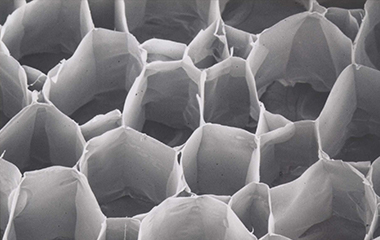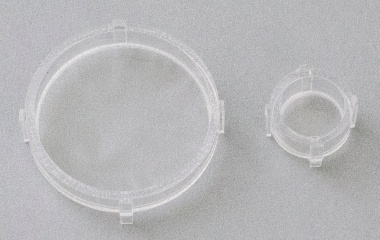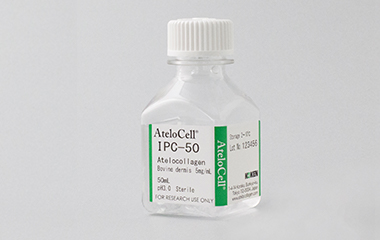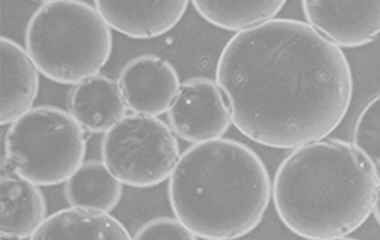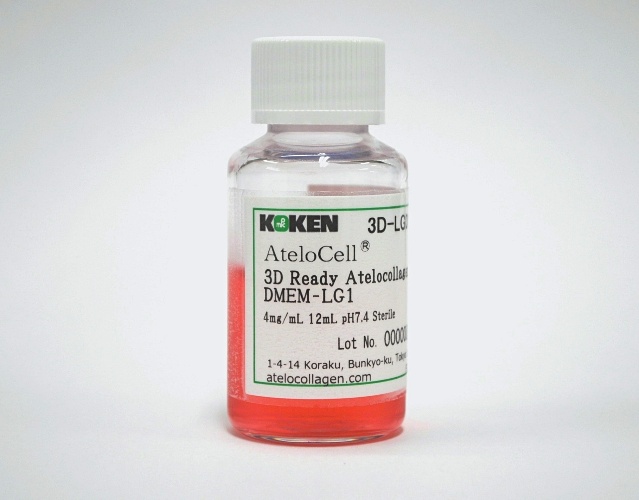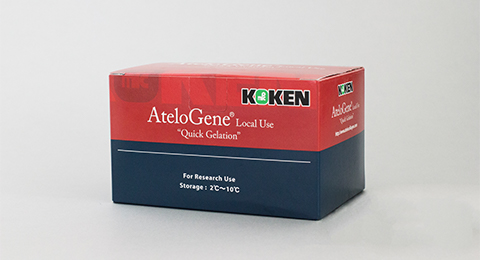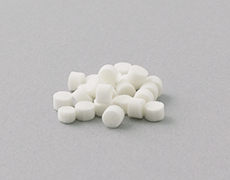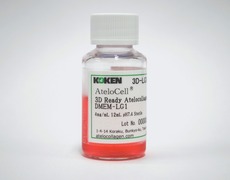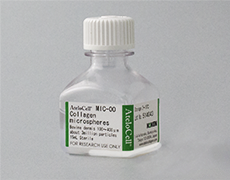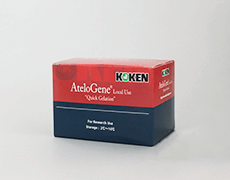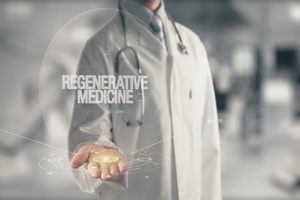Resources
Categories
Expanding the possibilities of atelocollagen in the 3D culture era

Atelocollagen from Koken
Founded in 1959, Koken Co., Ltd. began with research into the use of external prostheses to replace defects after cancer surgery by founder Dr. Taichiro Akiyama, who was an oral surgeon. From there, research and development into polymers such as silicone began, and the company branched into the business of medical plastics and educational medical models. Another pillar of the company’s business is the collagen industry, which was established by the second president, Dr. Akio Miyata. They were the first company in Japan to commercialize atelocollagen, which is produced by cutting and removing the telopeptide region of type I collagen using a protease, within the medical field. They have also expanded their collagen business into cosmetics and research reagents.
In recent years, advances in stem cells, such as induced pluripotent stem (iPS) cells, culture technology, 3D culture, coculture, and cell transplantation, have attracted attention. A wide range of needs are emerging in the field of regenerative medicine. Koken offers a supply of cell culture and transplantation scaffolds, AteloCell®, and in vivo siRNA/miRNA transfection reagents, AteloGene®, which are made from atelocollagen the same high-quality raw materials which have been used as medical devices for more than 30 years. We asked individuals from the sales, research, product development, and manufacturing departments about the appeal and background of the products that are useful at the forefront of current research.
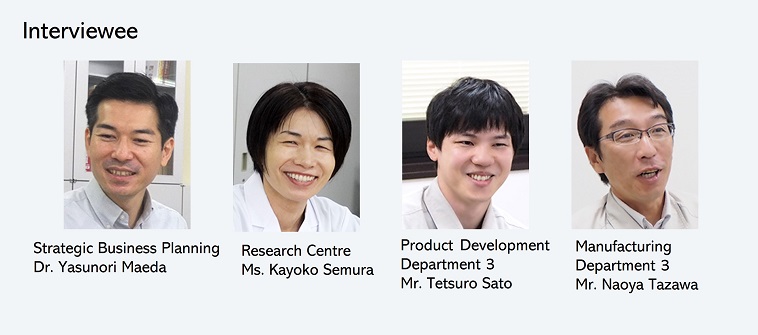
The AteloCell® series can be used in basic research with potential future clinical applications
What is Koken’s unique atelocollagen technology and services?
Maeda: Our company originally manufactured medical devices made from atelocollagen; therefore, we can provide comprehensive support from basic research to clinical application.
Including the era of its predecessor Cellgen brand, AteloCell® has been produced as a tissue culture product, including what is now known as 3D culture, for more than 30 years. However, 3D culture itself was a minor technique with a niche entity that was mainly used by researchers engaged in advanced regenerative medicine research in the past. Since the introduction of iPS cells, 3D culture has been rapidly growing. 3D culture is attracting attention in regenerative medicine and other fields, and I believe we have finally reached the stage where AteloCell® can play an active role. Our strength lies in the processing technology for atelocollagen itself. Even sponge-shaped collagen is available in various sizes, shapes, and degrees of hardness.
Sato: We also provide prototype production according to the customer’s request. In addition to manipulating atelocollagen, we have accumulated various processing knowledge. For example, with Atelocollagen Sponge, Mighty, to achieve the strength of the sponge, we repeatedly tested the conditions of atelocollagen itself, such as the concentration and pH, assessed many crosslinking methods, and reset the conditions. We created the product through repeated trial and error. Prototyping is a manual process that involves carefully controlling the numerical values at each stage.
This product was developed at the request of Professor Ken Nakata, Department of Health and Sports Sciences, Osaka University Graduate School of Medicine, for mechanical stimulation culture experiments (in vitro arthritis model) of synovium-derived cells. It has the strength to not collapse even under compressive loads of up to 40 kPa; therefore, it can be used for cell culture under various types of mechanical stimuli for research involving mechanical stress and can be used for cell transplantation.
>> Check details.
Sato: Mighty targets tissue, such as cartilage, as a scaffold for 3D culture and transplantation. Because collagen accounts for about 30% of all proteins in humans, I believe it could be used in regenerative medicine research for all tissues in the body. We would like to take on the challenge of creating scaffolds that meet the customer’s objectives, such as having the appropriate shape and strength for each organ.
Maeda: Our company originally manufactures medical devices made from atelocollagen, so we have leveraged that strength to further improve Mighty from basic research use to support clinical applications.
Semura: It would be great if research included not only medical use in humans but also in various other fields such as veterinary medicine.
| AteloCell® | |
Atelocollagen, Honeycomb SpongeThe honeycomb-like pore structure, which is densely arranged in a specific direction, facilitates the supply of nutrients and release of waste products, thus allowing cells to proliferate along the inner surface of the pores. Cells can grow on the walls of the honeycomb sponge, thereby making it suitable for culturing and transplanting cells derived from nerves and blood vessels. In addition to being able to collect cells using collagenase, it is biodegradable and can be used for transplantation.» Check details
|
Atelocollagen, Permeable MembraneFor in vitro experiments, cell–cell interactions can be reproduced and observed by seeding cells on both sides of the membrane. Furthermore, in in vivo experiments, cells cultured on the membrane can be transplanted with the membrane like a cell sheet. In addition, because of its high transparency and biocompatibility, it is suitable for experiments such as corneal transplantation. » Check details
|
Atelocollagen/Native Collagen Acidic SolutionsThis solution is used to make the collagen gel for 3D culture and is maintained in an acidic state so that it can be stored for an extended period of time under refrigeration conditions. It is highly versatile and can be used to coat culture equipment, and cells can be co-cultured in and on the collagen gels.» Check details
|
Atelocollagen MicrospheresA microcarrier is made from atelocollagen for mass cell culture. Because cells adhere to the surface of the beads, increasing the bead surface area allows for large-scale cell culture. We believe that it is particularly suitable for the field of regenerative medicine, which requires the culturing of a large number of cells.» Check details
|
The baton passes through research, product development, manufacturing, and sales
What do each of your jobs entail, and what kind of difficulties do you face before a product is developed?
Semura: To begin with, I love experimenting, and I understand how difficult it can be, so I never found it challenging. Because we conduct research and experiments to develop new products and ideas, we naturally believe that this is the purpose of our existence. Our mission is to pass the baton on to the product development department.
Sato: Once the baton has been passed on to the research lab and is determined to be profitable in sales, the product development department is involved in turning it into a viable product. Once we establish a stable manufacturing method, we pass the baton on to the manufacturing department. Furthermore, we establish an inspection protocol to guarantee the required specifications are met and then pass the baton on to the quality control department.
Semura: However, the baton goes back and forth throughout the development process.
Tazawa: Here, we simply produce the products that have been developed. I do not have many moments of extreme joy or sadness, but I try to remain calm and continue working steadily.
Maeda: In new product development, the sales baton begins with gathering customer requests and opinions. Even after the product is commercialized, we listen to outside opinions and provide feedback within the company, and the baton continues to pass.
The moment when you feel fulfillment from research, product development, manufacturing, and sales
You are passing the baton and bringing research-use atelocollagen to the world, but when do you feel that it is rewarding?
Semura: When I attend academic conferences and give presentations or exchange business cards, users sometimes say, “Oh, you’re from Koken!” or “I use your products.” We rarely get to directly observe the reactions to a product after it goes on the market, so we are happy to hear their evaluations and requests at such an opportunity. I believe that results come full circle, and I will continue to do so going forward.
Sato: It is a great feeling when I can determine the cause of a problem that has been troubling the company for a long time and can solve it myself. I find it most rewarding when I establish a manufacturing method or implement an inspection protocol.
Maeda: I am happy when something I propose leads to product development or continued purchase. In addition, as a dream for the future, I hope that atelocollagen will be used in genome editing. AteloGene® is a transfection reagent that introduces siRNA or miRNA into mice, and I believe it would be a great fit for research conducted in vivo.
| AteloGene®
An in vivo transfection reagent that can form a complex when combined with nucleic acids and protect them from degradation. Local Use “Quick Gelation” allows for the sustained release of nucleic acids by forming a gel at the site of administration. Systemic Use delivers the nucleic acids to the entire body without forming a gel. Both can prevent the degradation of nucleic acids by nucleases, thereby reducing the number of injection and the amount of nucleic acids administered. »Check details.
|
| Oligonucleotide therapy development around the world |
Tazawa: The first shipment of a new product is a moment of great relief. When we inherit a product for manufacturing that everyone has spent years developing and it is being transported by truck for the first time, I feel relief that says, “Finally, we have made it!” It is a wonderful moment, no matter how many times you experience it.
Koken wants to collaborate with universities and companies for new research and development
While Koken responds to requests for prototype production of one-of-a-kind items, you often also conduct joint research with universities and companies and provide samples.
Maeda: Our company supports prototyping for a fee, but we would also like to collaborate with outside parties on research and development. There is no problem if the prototype is similar to something that we have past experience in manufacturing, but if we are trying to prototype something completely new, for which we have no experience, we consider how much time it will take and whether it is possible. In that case, we are afraid to accept paid prototypes without knowing if they are achievable. On the other hand, we typically enter into material transfer agreements with universities and create prototypes that we have no prior experience producing. However, many companies indicate they would prefer to avoid sharing the results included in the terms of the agreement. Of course, we understand their circumstances; however, I believe that it is a waste that there are many cases wherein the prototype request does not progress.
Therefore, starting in 2019, we created a “confirmation letter” as a precontractual step. By exchanging this “confirmation letter,” it is possible to produce a prototype and then receive an evaluation thereof from the client. Having that process in place can lower the hurdles that lead to subsequent sales and joint research.
Sato: It is quite difficult because something that we have never made before suddenly comes along. However, when I work with a large company, there are often conditions that I have never seen before, and new prototypes are created, which is very stimulating.
Maeda: I think we can expand the scope of prototyping to allow for flexible collaboration. Therefore, I hope that we can contribute to further research and development projects.
Future prospects/Summary
Koken has been producing medical collagen products for more than 30 years. Although it has a niche presence in the field of research reagents, with the same quality raw materials and processing knowledge used to produce collagen-based medical products, they can support customers in a consistent process from basic research to clinical application. This provides reliable support for new developing fields, such as regenerative medicine and gene therapy.

